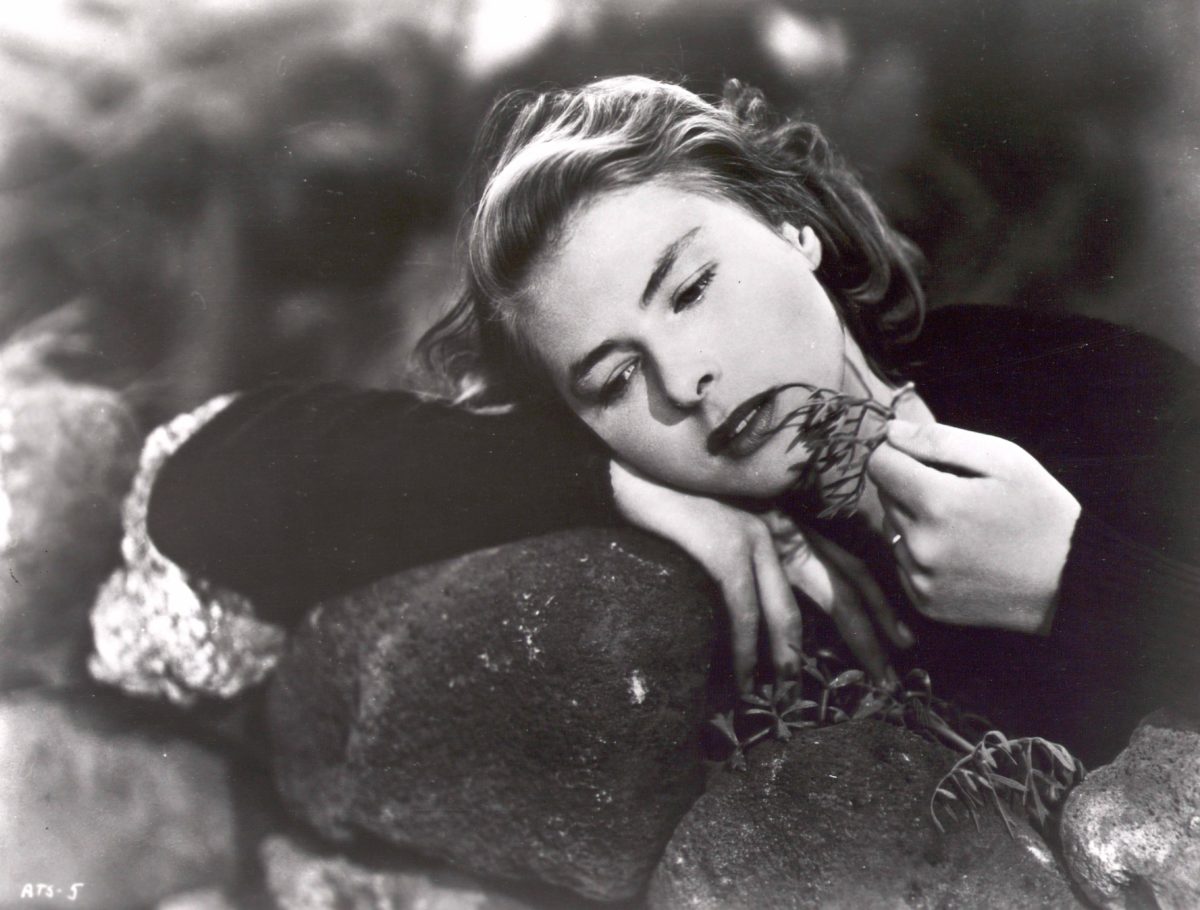Reviewing Roberto Rossellini’s Stromboli for Gazette du cinéma in 1950, Éric Rohmer strove to pick apart the paradoxical nuances that arise from the relationship between Ingrid Bergman’s performance and Rossellini’s direction, writing:
“If cinema were merely the art of probing the soul’s interior, I would be ready to give all of Stromboli for the Hitchcock shot [in Under Capricorn] in which Ingrid Bergman’s face, sunk against the edge of her bed, heavy-lipped, eyelids half-closed, reflects, in the space of an instant, such a wealth of diverse sentiments (fear and self-mastery, candor and calculation, rage and resignation) that the most concise writer could not express it in several pages. But Rossellini’s design is different, and it would be unfair of us to condemn him for denying us what others put so much science into revealing. In his work, each thing is in the present, is an appearance, a palpable form, and admits nothing beyond the divine hand that presided over its creation.”
Rohmer underlines the central push-pull liaison between the actor and the director, where “the soul’s interior” is practically in competition with the “divine hand” of the auteur. Our critical estimation of such a relationship has moved down its respective axes over the years, with performance spoken of as if it transcends its filmic housing, and direction considered a binding force that can smooth over any rough edges as engendered by the cast. Perhaps it’s time to return to Rohmer’s estimation of Stromboli, where these elements are treated as building blocks by both artists. The actor provides a certain foundation, and invites the director in, and vice versa.
Of course, this model is not bulletproof, nor is its employment synonymous with perfection. Thinking of the ways in which performance (in all its conveyed interiority and exterior histrionics) and direction (in all its creative authority) are intertwined can unveil new permutations of such cinematic bedrock, while also opening new channels for judicious criticism.
Most representative of these dueling notions is Ben Flanagan’s interrogation of the male English voice in documentary, where directors adopt an ostensible command of truth and depiction, performing with the contours of their cadences to either implicate themselves in the spectacle, or shield themselves from more discerning viewers; this established spectrum covers everyone from Adam Curtis to Mark Cousins, to the ultimate raconteur himself, Orson Welles.
This then extends to the presence of the actor, how their continued work with a specific director mutates over time, shouldering historic weight, or authorial proclivities—or both. Alonso Aguilar examines the jump made by Brazilian director Glauber Rocha and his supporting player-cum-star Maurício do Valle, from 1964’s Black God, White Devil to 1969’s eponymous Antonio das Mortes, in which a gradual hybridization of genres is embodied by do Valle himself.
Kathy Vanhout then analyzes the manifestation of influence in Werner Schroeter’s filmography, which returned time and time again to the image and voice of singer and actress Maria Callas, though the two never actually worked together; the existing iterations of Callas’ performativity are—respectfully—molded like putty by the director.
Elsewhere, the director atomizes their own passions across their entire casts, as opposed to the singular stand-in we’ve perhaps grown too accustomed to. Lawrence Garcia looks at the methods of French director Jacques Doillon, who invites his viewers into the constructed filmic fantasy via the subtly variegated gestures of the performers.
Finally, Cláudio Alves moves beyond the entity of the director entirely, locating the intersection of personal, romantic, artistic and performative lives in the working relationship of actress Jennifer Jones and domineering super-producer/husband, David O. Selznick, sussing out the intricacies of Jones’ unorthodox acting style that attracted the mogul to her so.
This issue of photogénie is offered as the search for a Rosetta Stone to further the necessary reinterpretations of acting and directing, and the innumerable loci provided by new modes of thinking. Rohmer cleaved space between the soul’s interior and the divine hand. Here is where they come together.
